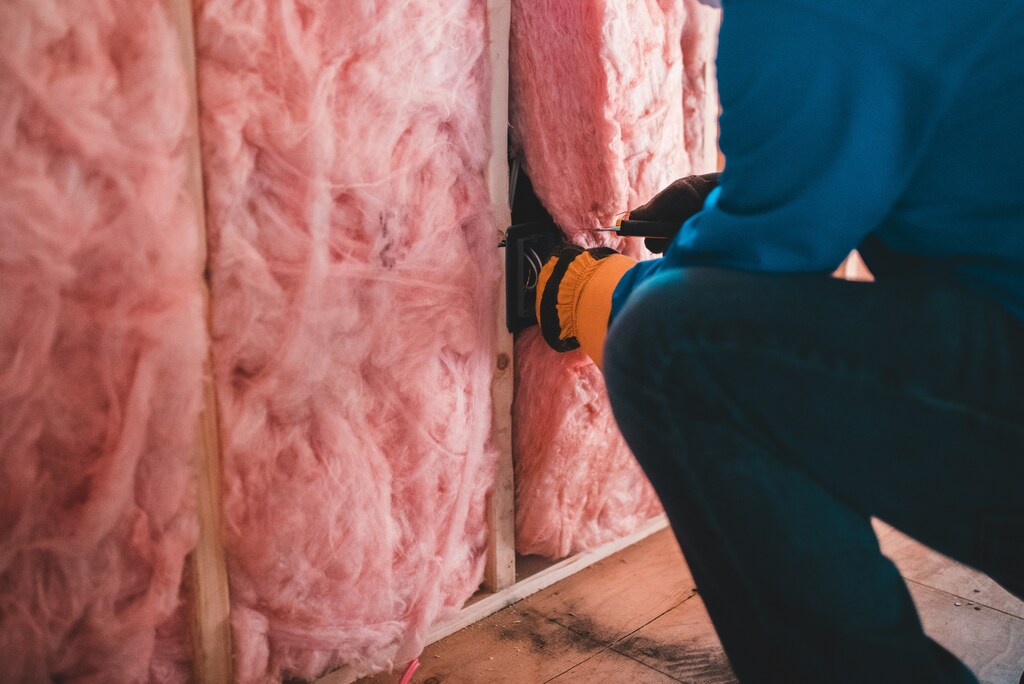Conex insulation is a process that aims to improve the thermal and acoustic efficiency of a container’s walls. It is often used in various types of construction, including commercial, residential, and industrial buildings because it can keep the indoor temperatures comfortable.
One of the best conex insulation materials is fiberglass, which is made of glass fibers bound with resin. Fiberglass has good insulating properties, is fire resistant, and is resistant to insects.
Fiberglass insulation is usually used for container homes, offices, and workshops between container wall panels for temperature control
Would you like to know more about the installation process and benefits of fiberglass insulation? Find out in this article!
Benefits

Sound Absorption
Fiberglass is made up of tiny glass fibers arranged in a dense, fluffy structure. It is one of the more effective and affordable materials for soundproofing or reducing noise transmission.
Thermal Performance
The thermal performance is measured by R-value – higher R means better insulation. Fiberglass’s thermal performances are R-13 to R-21 for walls and R-30 to R-60 for roofs/ceilings.
With that rate, fiberglass is considered good at keeping heat in during winter and out during summer.
Fire Resistance
One of the reasons fiberglass insulation is so popular in both residential and commercial construction is its fire resistance. The spun glass fibers are created by melting sand and recycled glass at high temperatures.
Since glass doesn’t burn, fiberglass doesn’t ignite or support combustion. Even when exposed to open flame, it will typically melt or smolder rather than catch fire.
Cost-Effective
Fiberglass insulation is one of the most cost-effective options available, especially when you’re working on container builds, home projects, or large-scale applications. Furthermore, it is widely available at hardware stores and in bulk.
Easy to Install in Framed Walls
Fiberglass insulation is very easy to install in framed walls, especially if you’re using standard wood or metal studs. That is why it’s a popular DIY choice for container conversions, sheds, homes, and more.
Safety Notes When Using Fiberglass
Fiberglass is a material that can irritate skin, eyes, and lungs if mishandled. Therefore, you must wear gloves, a mask, and goggles during the installation process. To enhance safety, seal off any gaps or tears to prevent fibers from circulating into indoor air.
Fiberglass is great for dry, controlled environments. But in moist conditions, it needs extra protection.
Fiberglass is made from glass and doesn’t absorb water chemically, but the air pockets between the fibers trap moisture from the air. If condensation forms on the container’s cold metal walls, that moisture can seep into the fiberglass.
One more thing to note, when fiberglass gets wet, water displaces the air pockets that normally trap heat. With that, fiberglass loses its R-value (thermal resistance) and reduces the insulation performance.
Installation Process
Here’s a step-by-step breakdown of the conex insulation process using fiberglass:
Clean & Prep the Container
Remove any existing rust, oil, or paint flakes from the interior. Clean up rough patches using a wire brush or grinder. Then, coat with anti-rust paint or primer to prevent corrosion.
Frame the Interior
Use metal studs or treated wood studs to create a wall frame inside the container. After that, space the studs 16-24 inches apart, similar to a standard house wall, and leave enough depth to fit fiberglass batts (usually 3.5″–6″).
Install Vapor Barrier (if needed)
You will need a vapor barrier if you live in humid or wet climates. Install a plastic vapor barrier against the metal wall to prevent moisture from reaching the fiberglass to avoid mold and mildew buildup.
Insert Fiberglass Insulation
Cut fiberglass batts or rolls to fit snugly between the studs. Then, press it into place without compressing it to reduce effectiveness. After that, fill every cavity evenly from floor to ceiling.
Seal & Tape
Seal small gaps with spray foam or caulk and use insulation tape to cover seams if using fiberglass batts with facing.
Install Interior Wall Panels
Finish the wall with plywood, drywall, or metal panels screwed into the studs and adjust it to your liking
Conclusion
Conex insulation with fiberglass is a budget-friendly, effective way to insulate container spaces. However, you need to ensure it’s properly installed and protected from moisture.
If you are looking for a conex box for your next project, check out our products! Standing at the top of the industry, Tradecorp is widely known for its high-quality containers open to so many creative applications. Fill out our quote form and we’ll guide you in finding the best container for your business goals!

